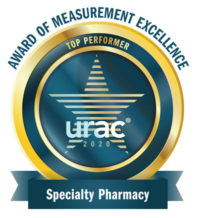
Each April, Donate Life America (DLA) leads National Donate Life Month (NDLM), an observance focusing national attention on the need and importance of organ, eye, and tissue donation. NDLM emphasizes the importance of registering your decision to be a donor, honoring deceased and living donors, and celebrating the lives they saved.
The generosity of donors and donor families makes saving lives through transplantation possible.
When Was the First Successful Organ Donation?
When we think of organ donation, many of us first think of donations made by deceased donors. Although experimental attempts at organ transplantation date back centuries, the first successful human organ donation and transplant that led to the establishment of the field was the living-donor kidney transplant performed by Dr. Joseph E. Murray in Boston in 1954. In the 1950s, advances in tissue typing, immunosuppression, and surgical techniques enabled the first successful kidney transplant between identical twins.
The Need is Great
The need for organ donors remains immense, with thousands of people on the waiting list for lifesaving transplants.
- As of March 2024, there were 106,782 people on the national organ transplant waiting list.
- The organ most in demand is the kidney, with 89,101 people (83% of the waiting list) in need of a kidney transplant.
- Other organs with high demand include liver (9,862 people), heart (3,436 people), and lung (943 people).
Organ Donors and Transplants in 2023
In 2023, there were 16,335 deceased and 16,336 living organ donors. These donors made 46,630 lifesaving organ transplants possible in 2023. The most common kidney transplant was the kidney, with 27,332 kidney transplants performed (59% of total transplants).
While 57% of transplant recipients were white, 66% of people on the waiting list were from ethnic minority groups (Black, Hispanic/Latino, Asian, etc.). This disparity highlights the need for more organ donors, especially from diverse backgrounds.
Myths and Misconceptions
Several common myths and misconceptions surrounding organ donation deter people from registering as donors.
Myth # 1: Doctors won’t try to save your life if you’re an organ donor.
Truth: Medical professionals will always make every effort to save a patient’s life first. The transplant team is separate from the care team and is only involved after all lifesaving measures have failed and death has been declared.
Myth #2: Your family will be charged for organ donation.
Truth: Organ or tissue donation does not cost the donor’s family anything. The organ procurement organization pays for all related costs.
Myth #3: Organ donation will interfere with funeral arrangements.
Truth: Donation does not delay funeral services; an open-casket viewing is still possible. Donor bodies are treated with dignity and respect.
Myth #4: You’re too old/unhealthy to be a donor.
Truth: There are no absolute age limits or health restrictions for donation. Medical suitability is determined at the time of death.
Myth #5: Celebrities get priority on the transplant waiting list.
Truth: Organ allocation is based solely on medical criteria like blood type, tissue match, medical urgency, and time on the waiting list — not social status or wealth.
Myth #6: Your religion prohibits organ donation.
Truth: Most major religions support and encourage organ donation as a generous act of helping others.
Are There Other Types of Organ Donation?
Yes, there are other types of donations besides organs, from both living and deceased donors that can save and heal lives:
Tissue Donations
- Corneas: Used to restore sight through corneal transplants.
- Skin: Used for burn victims and reconstructive surgeries.
- Heart valves: Used to replace defective heart valves.
- Bone: Used in orthopedic surgeries and dental procedures.
- Tendons: Used to repair injuries and help with mobility.[4]
Vascularized Composite Allografts (VCAs) are hand and face transplants that involve transplanting multiple structures like skin, bone, muscles, and nerves.
Donations are also possible while the donor is living. The most common donation is blood donation.
- Whole blood donation: The most common type of donation, where blood is donated and can be separated into red cells, plasma, and platelets.
- Power red donation: Allows donors to give a concentrated dose of red blood cells.
- Platelet donation: Platelets are collected through apheresis and used for cancer treatments, transplants, and surgeries.
- Plasma donation: Plasma is collected and used in emergencies to help stop bleeding.
Living organ donations involve donating an organ or part of an organ while the donor is still alive. Some common types of living organ donations include:
Kidney donation: This is the most common type of living organ donation, where a donor gives one of their two kidneys to someone in need of a kidney transplant.
Liver donation: A portion of the donor’s liver is surgically removed and transplanted into the recipient. The remaining portion of the donor’s liver regenerates over time.
Bone marrow donation: Marrow is a living tissue harvested from a donor’s body and transplanted into a recipient.
Lung donation: A rare procedure where a living donor gives one of their two lungs, usually to a family member or close friend.
Pancreas donation: An infrequent procedure where a portion of the donor’s pancreas is transplanted, often simultaneously with a kidney transplant.
Intestine donation: Another extremely rare procedure where a portion of the donor’s intestine is transplanted.
Living donations are typically between family members or close friends, but some donors donate to strangers in a non-directed donation. Living donors undergo extensive medical and psychological evaluations to ensure they are suitable candidates and make an informed, voluntary decision to donate.
What’s It Like to Receive an Organ Donation?
Many who receive an organ transplant have enjoyed active lives until they begin to experience organ failure. For some, like John, it may be renal failure. Others, like Hunter, may experience complications from other diseases, such as cystic fibrosis, leading to the need for a new liver. Others, like pediatric liver recipient Elias, are born with a disorder that leads to organ failure. But all these people, as well as thousands of others, are living happy, fulfilling and active lives, including Diane, who, after being diagnosed with Stage IV cancer and undergoing chemotherapy, a bone marrow transplant, and a heart transplant, became the first person in the world to run a full marathon within one year of transplant.
The Role of Infusion Therapies
Although organ recipients can live an active life, there are infusion therapies and medications that play a crucial role in supporting organ transplant recipients before and after the transplant surgery.
Intravenous Immunoglobulin (IVIG) is an infusion therapy containing antibodies from pooled human plasma given to highly sensitized kidney transplant recipients to lower the antibodies that could reject the new organ. IVIG reduces the sensitivity of Human Leukocyte Antigens (HLAs) and blocks their ability to attack the transplanted kidney. IVIG allows the recipient’s immune system to fight infections while preventing rejection of the new organ. IVIG is also administered to patients with immunodeficiencies, autoimmune disorders, and other conditions. Some of the brand names include:
- Bivigam
- Carimune
- Flebogamma
- Gammagard S/D (low IgA)
- Gammagard Liquid
- Gammaked
- Gammaplex
- Gamunex
- Octagam
- Privigen
- Panzyga
- IgVena
- Kiovig
The different brands may vary in IgA content, with Gammagard S/D having the lowest IgA levels, making it suitable for patients with IgA antibodies.
Immunosuppressants
After a transplant, recipients require lifelong immunosuppressant medications to prevent their immune system from rejecting the donated organ. Common immunosuppressants given as infusions or oral medications include tacrolimus, mycophenolate, and corticosteroids. Careful monitoring and dosing are required to balance preventing rejection while avoiding over-immunosuppression.
Extracorporeal Photopheresis (ECP)
ECP is a cellular therapy where the recipient’s blood is treated with a photosensitizing agent and exposed to UV light before being reinfused. ECP modulates the immune system and induces hypo-responsiveness, allowing the body to accept the transplanted organ. ECP can be used before and after transplant to induce tolerance and treat rejection episodes.
By using these infusion therapies and medications, transplant teams can better manage the recipient’s immune system, induce tolerance, and improve the chances of the body accepting the lifesaving donated organ.
How to Become a Donor
Registering to become an organ donor is simple. DMV and Driver License Partner staff have helped 165 million people in the US register their decision to be deceased organ, eye, and tissue donors. In fact, 90% of donor registrations come through DMVs. There are state donor registries and the National Donate Life Registry. When you register at the DMV, you are registering in your state donor registry.
Your state donor registry can be found by contacting your Donate Life State Team.
Both your state donor registry and the National Donate Life Registry are checked by donation professionals at the time of your death. Your most recent donor registration is honored as the legal document of gift. You can access your National Donate Life Registry registration anytime at RegisterMe.org.
This month, 12 Stone Infusion Centers encourages everyone to consider the most precious donation: Donating Life.















